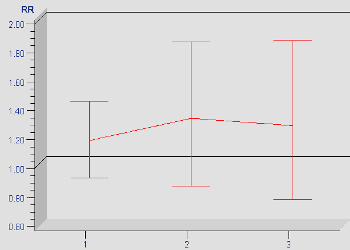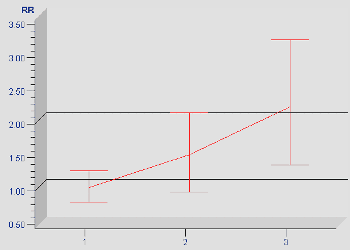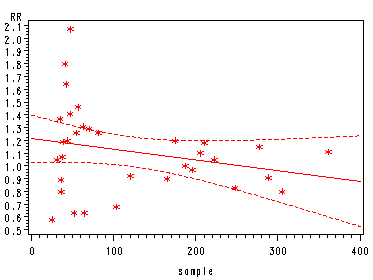 |
 |
| ||||
Hoofdmenu
Navigatie
Internationaal
Canada VS afdelingen
California Affiliates
Smokers' Club
Forces Nederland |
WHO tabellen
De tabellen betreffen:
Leesvoer:
| |||||||||||||||||||||||||||||||||||||||||||||||||||||||||||||||||||||||||||||||||||||||||||||||||||||||||||||||||||||||||||||||||||||||||||||||||||||||||||||||||||||||||||||||||||||||||||||||||||||||||||||||||||||||||||||||||||||||||||||||||||||||||||||||||||||||||||||||||||||||||||||||||||||||||||||||||||||||||||||||||||||||||||||||||||||||||||||||||||||||||||||||||||||||||||||||||||||||||||||||||||||||||||||||||||||||||||||||||||||||||||||||||||||||||||||||||||||||||||||||||||||||||||||||||||||||||||||||||||||||||||||||||||||||||||||||||||||||||||||||||||||||||||||||||||||||||||||||||||||||||||||||||||||||||||||||||||||||||||||||||||||||||||||||||||||||||||||||||||||||||||||||||||||||||||||||||||||||||||||||||||||||||||||||||
| All subjects* |
Women* |
|||||||||
|---|---|---|---|---|---|---|---|---|---|---|
| Case subjects | Control subjects | OR | 95% CI | P for trend† | Case subjects | Control subjects | OR | 95% CI | P for trend† | |
| Ever exposed | ||||||||||
|
No |
252 | 496 | 1.00 | Referent | 187 | 295 | 1.00 | Referent | ||
|
Yes |
389 | 1021 | 0.78 | 0.64–0.96 | 314 | 700 | 0.77 | 0.61–0.98 | ||
|
Missing values |
9 | 25 | 8 | 16 | ||||||
|
No. of smokers |
||||||||||
|
None |
252 | 496 | 1.00 | Referent | 187 | 295 | 1.00 | Referent | ||
|
1 |
305 | 750 | 0.80 | 0.64–0.99 | 243 | 528 | 0.76 | 0.59–0.98 | ||
|
2 |
52 | 191 | 0.63 | 0.44–0.90 | 43 | 117 | 0.69 | 0.46–1.04 | ||
|
>=3 |
32 | 80 | 1.05 | 0.65–1.70 | .24 | 28 | 55 | 1.13 | 0.67–1.91 | .54 |
|
Missing values |
9 | 25 | 8 | 16 | ||||||
| Cumulative exposure (weighted smoker-years) |
||||||||||
|
0 |
252 | 496 | 1.00 | Referent | 187 | 295 | 1.00 | Referent | ||
|
0.1–14.0 |
248 | 582 | 0.83 | 0.66–1.04 | 193 | 394 | 0.78 | 0.60–1.02 | ||
|
14.1–18.0 |
104 | 332 | 0.68 | 0.51–0.92 | 93 | 239 | 0.73 | 0.53–1.02 | ||
|
>=18.1 |
37 | 107 | 0.80 | 0.51–1.24 | .02 | 28 | 67 | 0.90 | 0.54–1.50 | .10 |
|
Missing values |
9 | 25 | 8 | 16 | ||||||
* OR 4 odds ratio adjusted for age and sex–center interaction;
CI 4 confidence interval.
† Two-tailed P value of test for linear trend.
Relevante getallen zijn in
blauw aangegeven.
|
|
|
Het WHO onderzoek lijkt dus meer te duiden op positieve effecten van meeroken in de kinderleeftijd (RR<1) dan op nadelige! Andere onderzoeken lijken in diezelfde richting te wijzen.
| All subjects* |
Women* |
|||||||||
|---|---|---|---|---|---|---|---|---|---|---|
|
Case subjects |
Control subjects |
OR | 95% CI | P for trend† | Case subjects | Control subjects | OR | 95% CI | P for trend† | |
| Ever exposed | ||||||||||
| No | 305 | 838 | 1.00 | Referent | 187 | 376 | 1.00 | Referent | ||
| Yes | 344 | 700 | 1.16 | 0.93–1.44 | 321 | 632 | 1.11 | 0.88–1.39 | ||
| Missing values | 1 | 4 | 1 | 3 | ||||||
| Duration of exposure (in years) | ||||||||||
| Unexposed | 305 | 838 | 1.00 | Referent | 187 | 376 | 1.00 | Referent | ||
| 1–34 | 223 | 498 | 1.05 | 0.83–1.33 | 202 | 439 | 0.99 | 0.77–1.27 | ||
| 35–42 | 65 | 103 | 0.63 | 0.12–2.37 | 64 | 98 | 1.57 | 1.06–2.31 | ||
| ≥43 | 38 | 80 | 1.07 | 0.68–1.68 | .10 | 37 | 76 | 1.05 | 0.66–1.68 | .19 |
| Missing values | 19 | 23 | 19 | 22 | ||||||
| Duration of exposure (hours/day × years) | ||||||||||
| Unexposed | 297 | 778 | 1.00 | Referent | 181 | 327 | 1.00 | Referent | ||
| 1–135 | 165 | 396 | 0.90 | 0.70–1.16 | 146 | 348 | 0.80 | 0.61–1.06 | ||
| 136–223 | 44 | 81 | 1.20 | 0.78–1.85 | 42 | 75 | 1.12 | 0.72–1.74 | ||
| ≥224 | 41 | 53 | 1.80 | 1.12–2.90 | .02 | 41 | 52 | 1.70 | 1.05–2.75 | .03 |
| Missing values | 103 | 234 | 99 | 209 | ||||||
| Average exposure (cigarettes/day) | ||||||||||
| Unexposed | 297 | 778 | 1.00 | Referent | 181 | 327 | 1.00 | Referent | ||
| 0.1–10.0 | 206 | 411 | 1.10 | 0.86–1.40 | 184 | 360 | 1.00 | 0.77–1.31 | ||
| 10.1–18.0 | 25 | 83 | 0.58 | 0.35–0.90 | 25 | 79 | 0.57 | 0.34–0.93 | ||
| ≥18.1 | 35 | 55 | 1.37 | 0.85–2.20 | .88 | 35 | 52 | 1.34 | 0.83–2.17 | .97 |
| Missing values | 87 | 215 | 84 | 193 | ||||||
| Cumulative exposure (pack-years) | ||||||||||
| Unexposed | 297 | 778 | 1.00 | Referent | 181 | 327 | 1.00 | Referent | ||
| 0.1–13.0 | 188 | 411 | 1.00 | 0.78–1.28 | 167 | 358 | 0.91 | 0.70–1.19 | ||
| 13.1–23.0 | 36 | 83 | 0.89 | 0.57–1.39 | 35 | 78 | 0.83 | 0.52–1.30 | ||
| ≥23.1 | 42 | 55 | 1.64 | 1.04–2.59 | .09 | 42 | 55 | 1.54 | 0.97–2.44 | .15 |
| Missing values | 87 | 215 | 84 | 193 | ||||||
*OR
= odds ratio adjusted for age and sex–center interaction; CI = confidence interval.†Two-tailed P value of test for linear trend.
Blauw is géén statistisch significant effect
Groen is voordelig effect
Rood statistisch significant effect
| All subjects* |
Women* |
|||||||||
|---|---|---|---|---|---|---|---|---|---|---|
| Case subjects | Control subjects | OR | 95% CI | P for trend† | Case subjects | Control subjects | OR | 95% CI | P for trend† | |
| Ever exposed | ||||||||||
|
No |
276 | 687 | 1.00 | Referent | 240 | 535 | 1.00 | Referent | ||
|
Yes |
374 | 855 | 1.17 | 0.9–1.45 | 269 | 476 | 1.19 | 0.94–1.51 | ||
|
Missing values |
0 | 0 | 0 | 0 | ||||||
| Duration of exposure (in years) |
||||||||||
|
Unexposed |
276 | 687 | 1.00 | Referent | 240 | 535 | 1.00 | Referent | ||
|
1–29 |
278 | 634 | 1.15 | 0.91–1.44 | 211 | 399 | 1.14 | 0.89-1.47 | ||
|
30–38 |
55 | 129 | 1.26 | 0.85-1.85 | 37 | 47 | 1.50 | 0.93-2.43 | ||
|
>=39 |
39 | 91 | 1.19 | 0.76-1.86 | .21 | 20 | 29 | 1.24 | 0.67-2.28 | .19 |
|
Missing values |
2 | 1 | 1 | 1 | ||||||
| Duration of exposure (level‡ × hours/ day × years) |
||||||||||
|
Unexposed |
276 | 687 | 1.00 | Referent | 240 | 535 | 1.00 | Referent | ||
|
0.1–46.1 |
196 | 525 | 0.97 | 0.76–1.25 | 148 | 316 | 1.03 | 0.78–1.36 | ||
|
46.2–88.9 |
47 | 105 | 1.41 | 0.93–2.12 | 26 | 54 | 1.08 | 0.65–1.81 | ||
|
>=89.0 |
48 | 71 | 2.07 | 1.33–3.21 | .01 | 30 | 33 | 1.87 | 1.10–3.20 | .03 |
|
Missing values |
83 | 154 | 65 | 73 | ||||||
* OR = odds ratio adjusted for age and sex–center interaction; CI = confidence
interval.
† Two-tailed P value of test for linear trend.
Relevante getallen zijn in blauw aangegeven.
Rood is statistisch significant.
 Aantal jaren blootgesteld |
 Idem in nivo*uren per dag * jaren |
Conclusie: Alleen in het ergste geval valt er een zwak statistisch relevant risico te onderscheiden. In alle andere gevallen KAN er zelfs sprake zijn van voordelige effecten.
Wat ook hier weer, evenals bij de onderzoeken naar niet-rokende vrouwen van rokers, opvalt is de lagere RR bij grotere steekproefgroottes:

De hogere RR's worden gemeten in de kleine steekproeven. Grotere steekproeven liggen dichter bij de werkelijke grootte van de populatie. De ultra-hoge RR ligt in een van de de kleine steekproeven.
Het argument van de WHO dat het onderzoek geen verband kon bewijzen omdat de steekproef te klein was lijkt dus geen hout te snijden: bij een grotere steekproef zouden ze waarschijnlijk een kleinere RR hebben gevonden, dus NOG minder bewijs voor een verband tussen meeroken en longkanker....
|